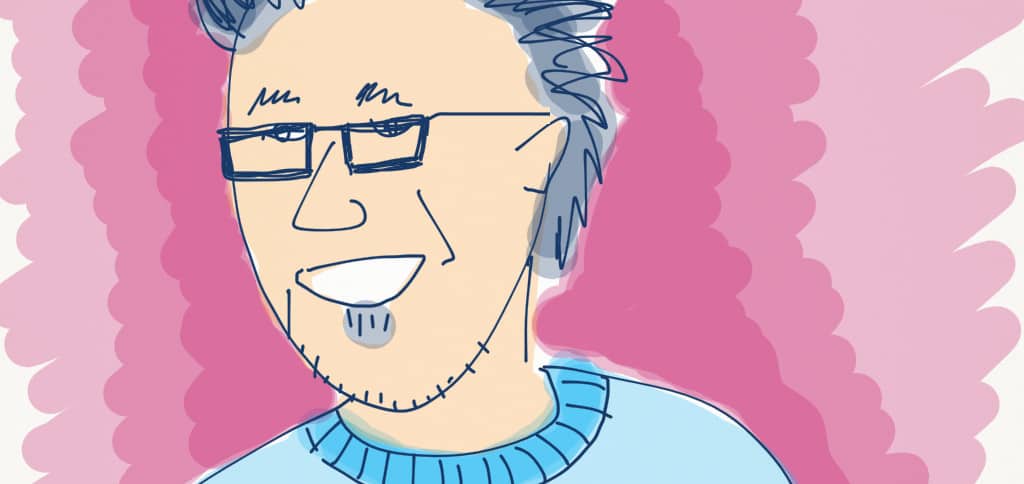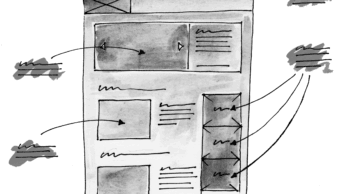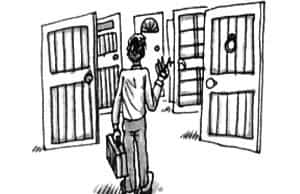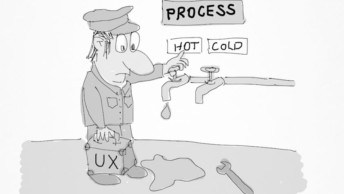Here’s the third of our series of UX Australia interviews. UX Australia is a conference about user experience that’s on in Brisbane this week. Jake Causby is speaking at the conference; here he gives us his thoughts on design transparency, the state of UX design in Australia, and how he arrived at a career as a UX designer.
Give us a rundown of how you came to work as a user experience practitioner, what it is you do, and what you love about it.
I entered UX design through web design, which I started doing back in 1996. I never technically made the leap from one to the other, because I spent many years contracting myself to companies needing web and software solutions. But I guess you could say I made the transition around the same time I starting preferring 15px type over 11px type. I have been working at Atlassian for the last two years, mainly designing technical software for software developers. More recently I have been working on pulling together a visual and interaction styleguide and pattern library for all of our products. I love working and collaborating with smart, motivated people to achieve a short term goal which we can iterate on and perfect over time.
Every now and then we see passionate blog posts pop up, bemoaning the use of “UX” as a discipline and arguing that everyone involved in making a product should be thinking about the user experience, not just the “UX designer”. What are your thoughts on this?
I believe this is absolutely true. Anyone making decisions that will affect the user’s experience should be thinking about the effects. Let’s not confuse this however, with the fact that this does not mean they are now a UX designer. Nor should it negate the need for a UX designer. I believe a large part of a UX designer’s role is to influence the culture of an organisation in such as way that encourages non-designers to use a similar framework for identifying, assessing, validating and iterating on whatever they are working on. Just as a great CEO inspires people to believe in a single vision, a great UX designer will inspire the team to believe in the importance of the customer’s experience.
What’s your take on the state of user experience design in Australia, compared to the rest of the world?
We seem to be a pretty small crowd here in Australia. But just like in other parts of the world I think there’s some brilliant practitioners based here. I don’t really have an opinion about the quality of design being done in Australia compared to the rest of the world but I certainly believe we’re gaining more momentum and becoming much better at what we’re doing. I believe this has a lot to do with the fact that we have a pretty strong community and most people are more than happy to share their knowledge and skills. This goes a long way to boost the profession as a whole.
What tips would you give to a print designer who was interested in transitioning to a career as a UX designer?
I think there are three major differences it’s necessary to get your head around; flow, artefacts and permanency.
- Flow: UX design is all about allowing users to achieve goals quickly and easily. It’s about exploring the necessary steps the user must make to reach their end goal. Can we remove some of these steps? Can we make it less confusing? How can we improve the flow?
- Artefacts: In print design we might do some sketching, illustration or photography to facilitate the creative process, but generally we try and design the end product to the best of our abilities before we get feedback. With UX design we have lots of opportunities along the way to get feedback on tangible artifacts that do not go towards making the final design, but will help make sure we’re on the right track. Sketches, wireframes and prototypes can be built quickly and easily and iterated upon, reducing the feedback loop. We need to be good at producing all these different types of artefacts, as well as having skills in usability testing and design facilitation.
- Permanency: A print designer does not have the luxury of getting large-scale feedback from users, measuring effectiveness and improving their designs over time. Learning how to harness this is a skill that doesn’t come easily. When do we say something is good enough to release? How much time are we going to spend perfecting something before we allow our users to get the value out of using it? We can iterate. Make sure the value to users always outweighs their pain.
Let us know what attendees to UX Australia can expect from your presentation.
My presentation is on Design Transparency. I believe the design process should be transparent to the team and its stakeholders to gain a shared understanding and maximise multi-disciplinary knowledge and skills. Using experiences from Atlassian, I will discuss channels for sharing, collaboration techniques and culture shifts that will help improve design transparency within your organisation.
UX Australia is a two-day conference about user experience design. It’s on at the Sofitel Brisbane Central from 30-31 August, 2012, and features a ton of local and international presenters. There are also two days of workshops on August 28 and 29.





